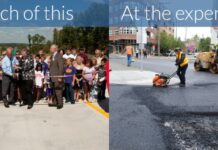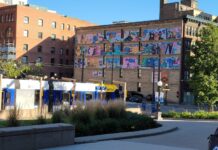How ITDP India is ‘Gamifying’ Urban Transport Planning
In 2020, ITDP India launched two national programmes with the Government of India’s Smart Cities Mission — the India Cycles4Change and Streets4People Challenges — aimed at...
What Is A Low Emission Zone?
In cities experiencing rapid urbanization especially, there is a need to shift away from both private cars and transition to electric vehicles to address...
Compact Electric Cities: The Only Way to 1.5°
To meet the goals of the Paris Climate Agreement and for a chance of limiting climate change to less than 1.5°C, neither vehicle electrification...
#MejoresCallesMX: Envisioning Better Streets Across Mexico
All around the world, there is a movement to re-imagine and re-design urban streets that better serve the needs of people, rather than emissions-heavy...
How Peshawar Approaches Sustainable, Accessible & Inclusive Transport
The post How Peshawar Approaches Sustainable, Accessible & Inclusive Transport appeared first on Institute for Transportation and Development Policy.
Compact & Electrified Cities Have the Potential to Massively Reduce Emissions
The post Compact & Electrified Cities Have the Potential to Massively Reduce Emissions appeared first on Institute for Transportation and Development Policy.
From the Golden Coast to the Bay State: U.S. Cities on the Move
The post From the Golden Coast to the Bay State: U.S. Cities on the Move appeared first on Institute for Transportation and Development Policy.
From Commuter to Care: Public transport’s role in creating the new normal
The post From Commuter to Care: Public transport’s role in creating the new normal appeared first on Institute for Transportation and Development Policy.










